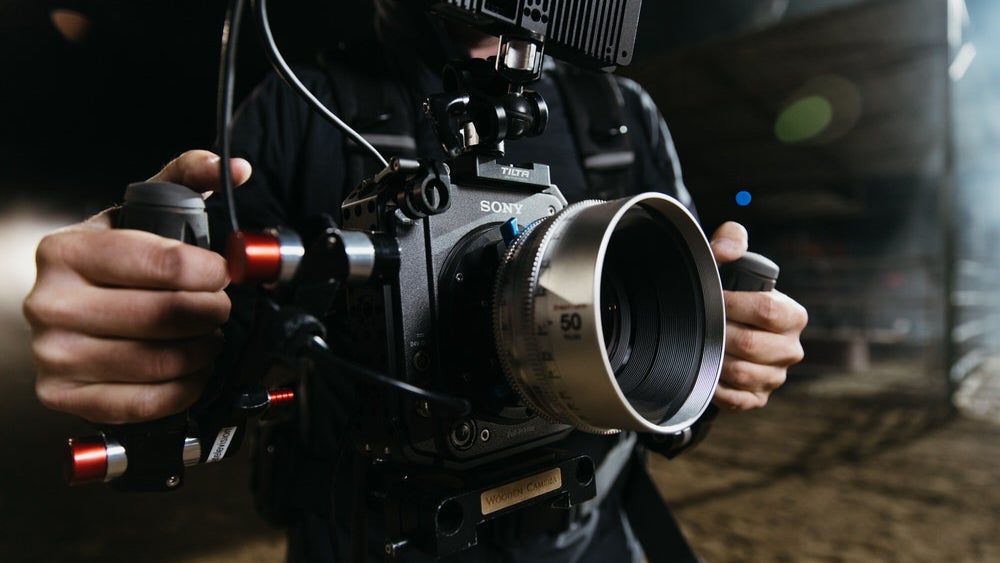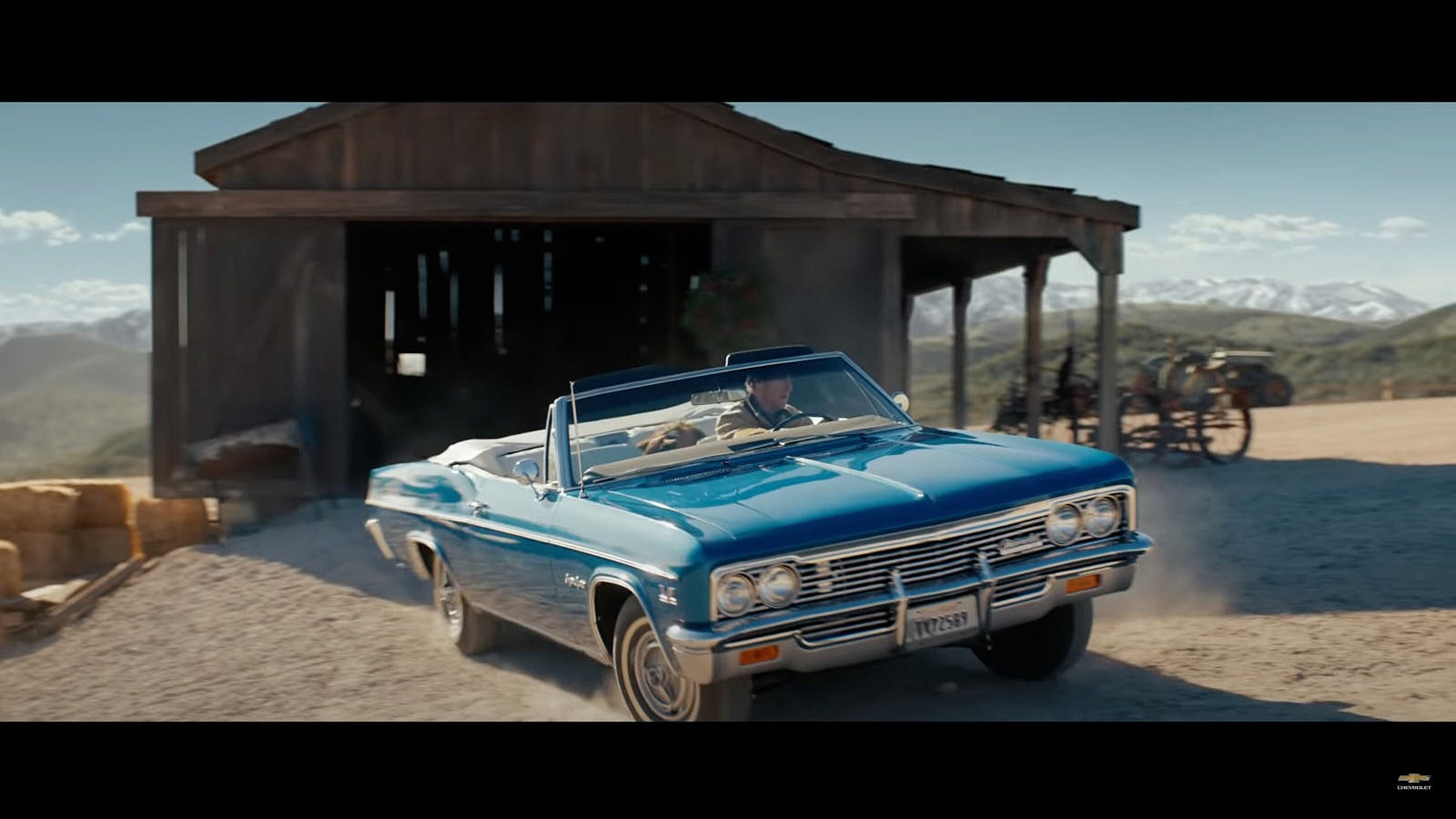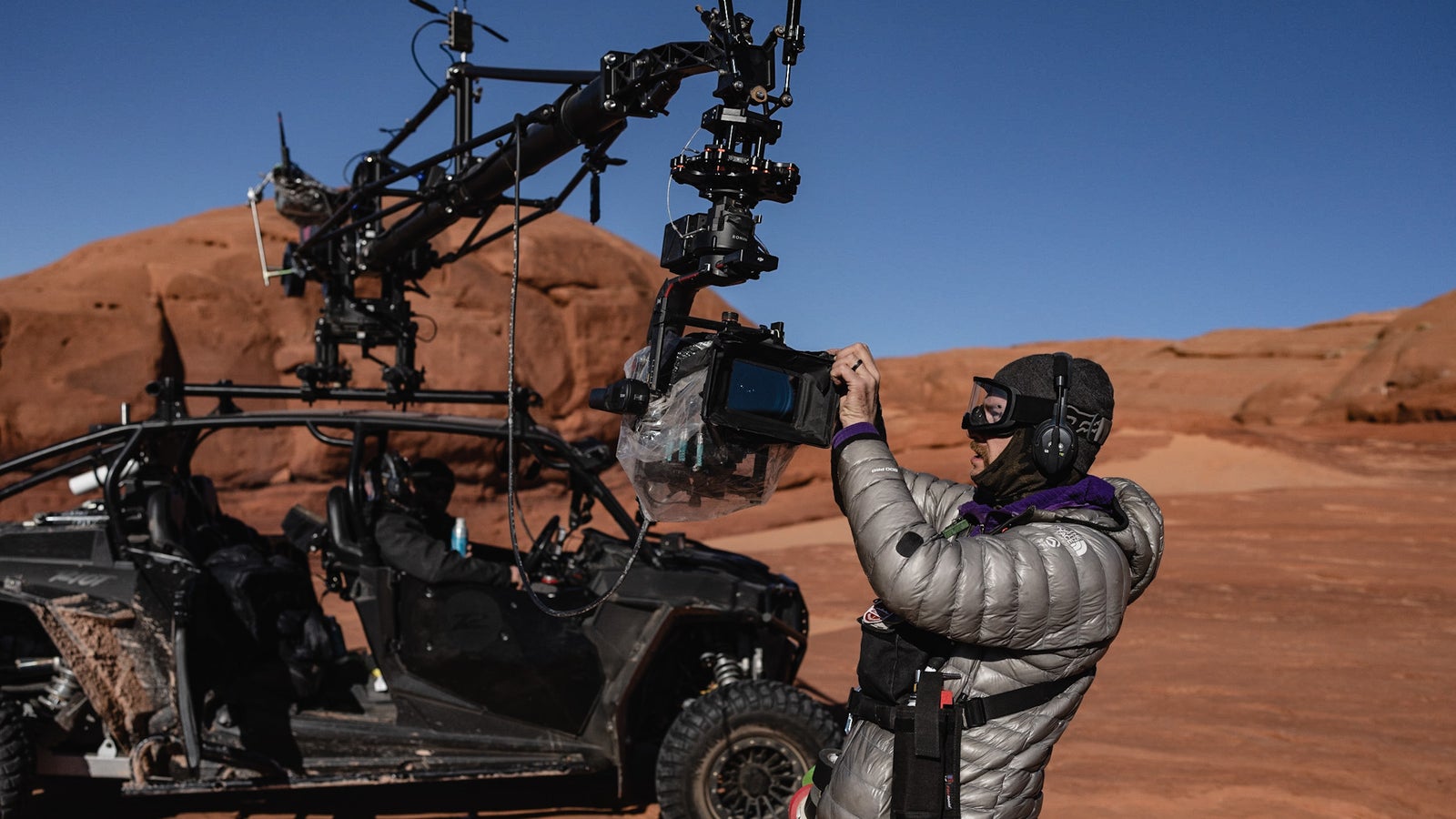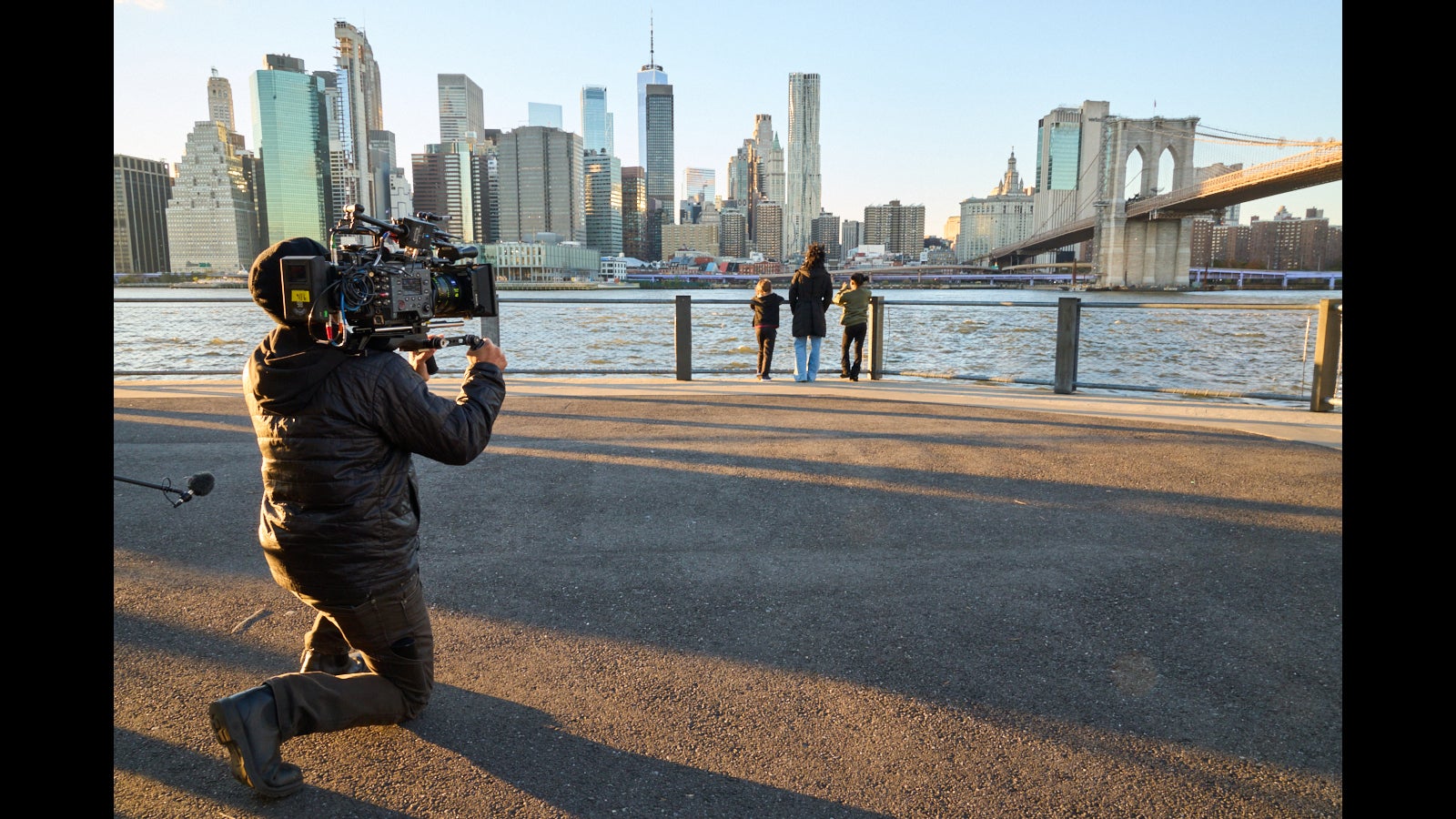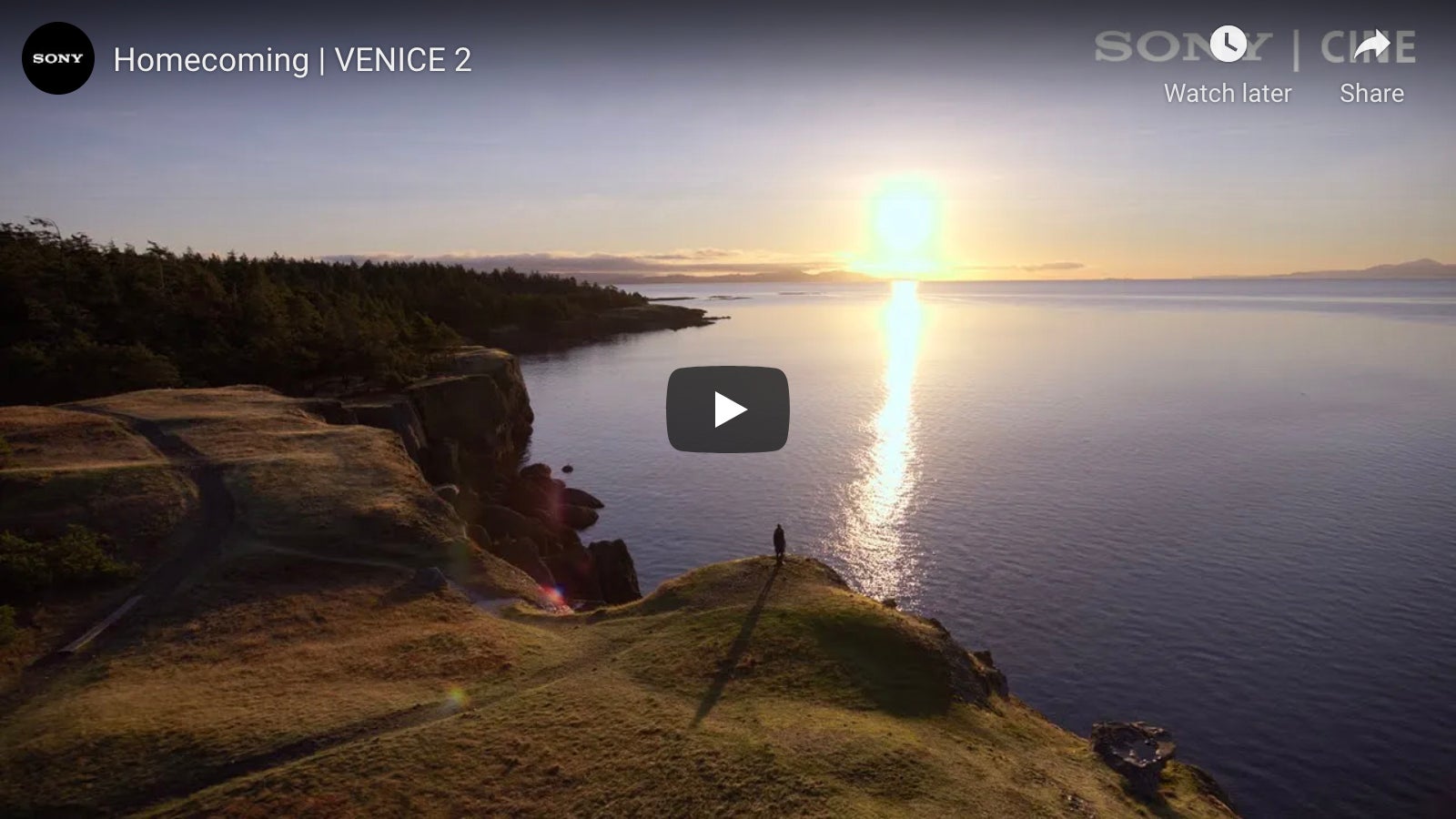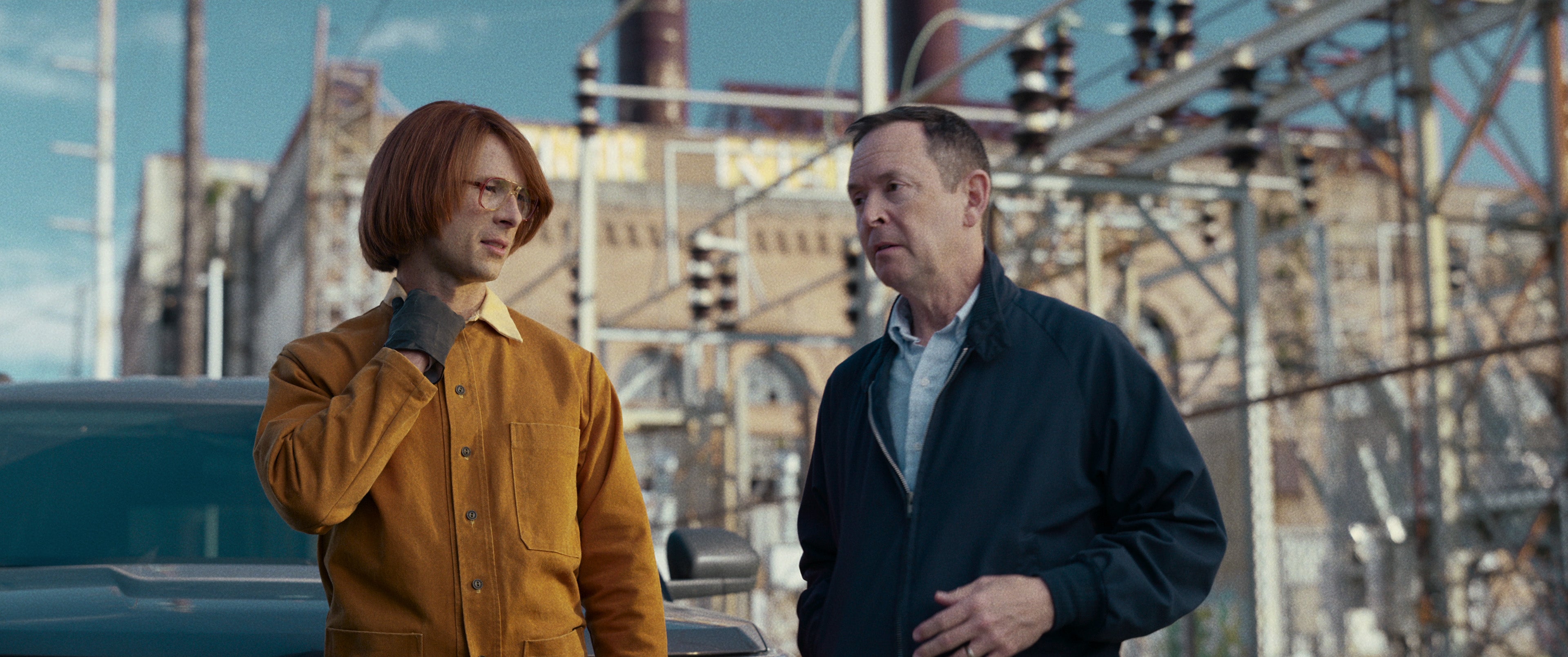
07-22-2024 - Case Study
DP Shane F. Kelly Reveals How He Captured the Essence of Chinatown in Linklater’s Hit Man
By: Yaroslav Altunin
Richard Linklater is an eclectic film director with a storied career and he shows no sign of stopping even with over two dozen films under his belt. With projects like School of Rock, A Scanner Darkly, and The Before Trilogy, it’s hard to pin down Linklater’s style, which is why he probably doesn’t stick with one Director of Photography. It’s hard to develop a look when it’s constantly evolving via collaboration with different creatives.
However, Linklater has worked with several cinematographers consistently, and DP Shane F. Kelly is one of them. Known for his collaboration with Linklater on A Scanner Darkly and the 12-year-spanning film Boyhood, the duo have made some unique films.
For Hit Man, Linklater’s noir romcom that was picked up by Netflix, Kelly found a more traditional film that was crafted in partnership with lead actor Glen Powell.
Hit Man: 20 Years In The Making
Based on true events, this film was born out of a 2001 story published in Texas Monthly that was written by Skip Hollandsworth.
“Hit Man is about the life of Gary Johnson,” Linklater explained. “He has a unique job of being the undercover contract killer who gets sent out when some crazed person thinks they can hire a hitman on the open market, which doesn't exist.”
During the late 1980s and 1990s, Johnson worked for the Houston Police to catch the people who were looking to have someone murdered. He would pose as a hit man by altering his persona to make his targets feel more comfortable.
Linklater read this story when it was first published in 2001, but could never find the right way in.
“It always stuck with me. This character of this guy who plays the fake hitman.” Linklater continued.
This unique character remained
“I've always been intrigued by this notion of hitmen, because I know they don't really exist on a retail level,” Linklater said. "Mostly I was just intrigued with this character of Gary. This quiet guy who lived with his cats and was a Zen master dude who taught at a college and worked undercover.”
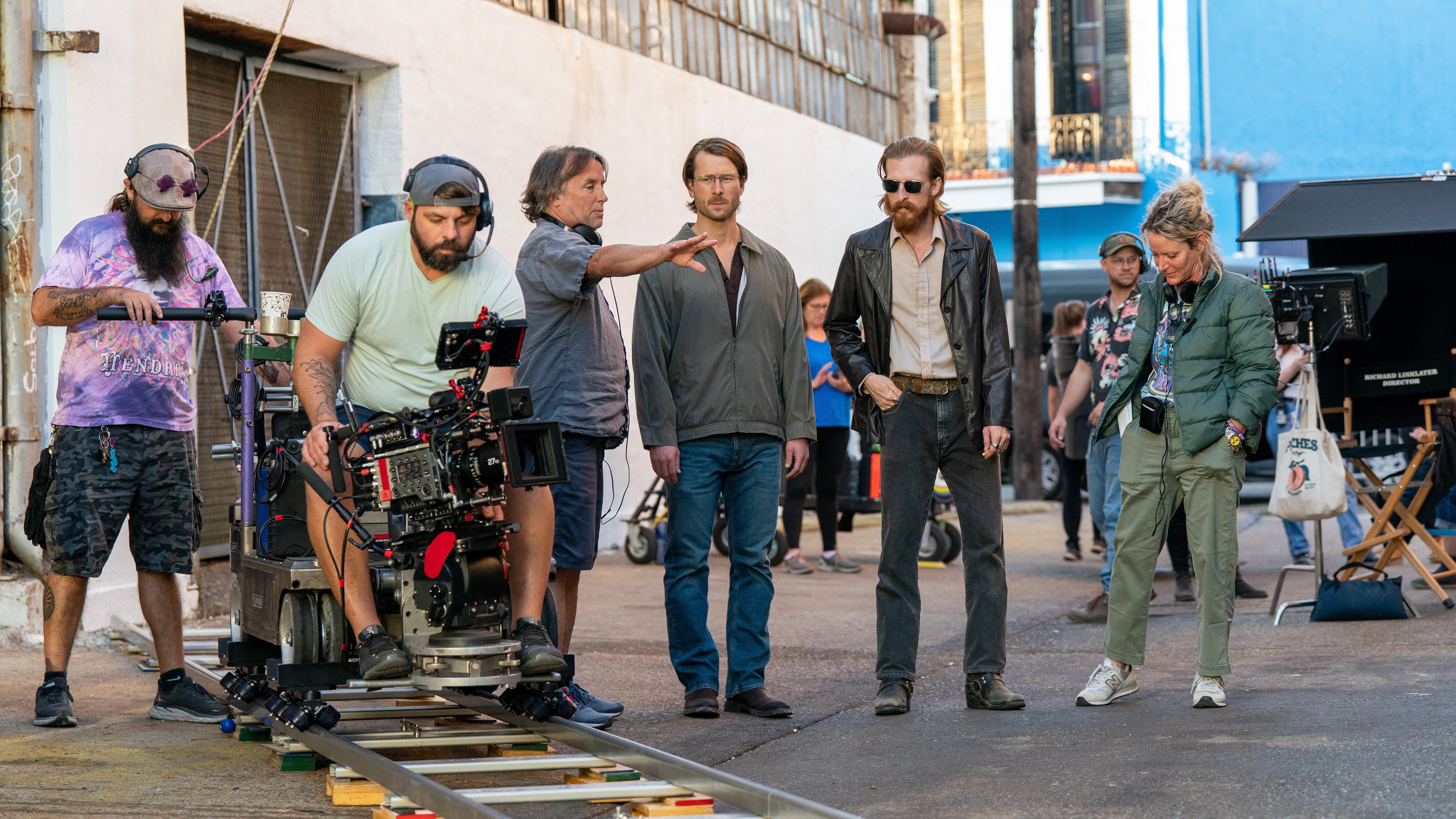
The Real Gary Johnson
For Linklater, the story never seemed to have a third act. That is, until Powell found the article himself and reached out to the director. This serendipitous union gave Linklater the permission, as he calls it, to fictionalize the story enough and get a resolution worthy of making a movie.
“We're not making a documentary about this guy. Let's just use that as a jumping off place,” Linklater said. “And once we really got to talking, we started having fun with it.”
The collaboration would bring the film to life, leading Powell to join Linklater as a co-writer on Hit Man.
“I found it to be a really interesting exploration of how a guy was trying on all these different pieces of himself. And, the real Gary Johnson, was the source of this.” Powell Said. “I just went all to the source material, and I went through all of (Johnson’s) debriefs. Rick and I combed through decades of these debriefs of sitting down with real clients.”
While based on a true story, the film version of Gary Johnson was fictionalized in order to heighten the comedic and cinematic elements of the film.
“Every time Rick and I were at the computer writing, we never lost sight to why we were leaning in, in the first place,” Powell continued. “And the reason is, Gary Johnson is a really, really compelling starting point.”
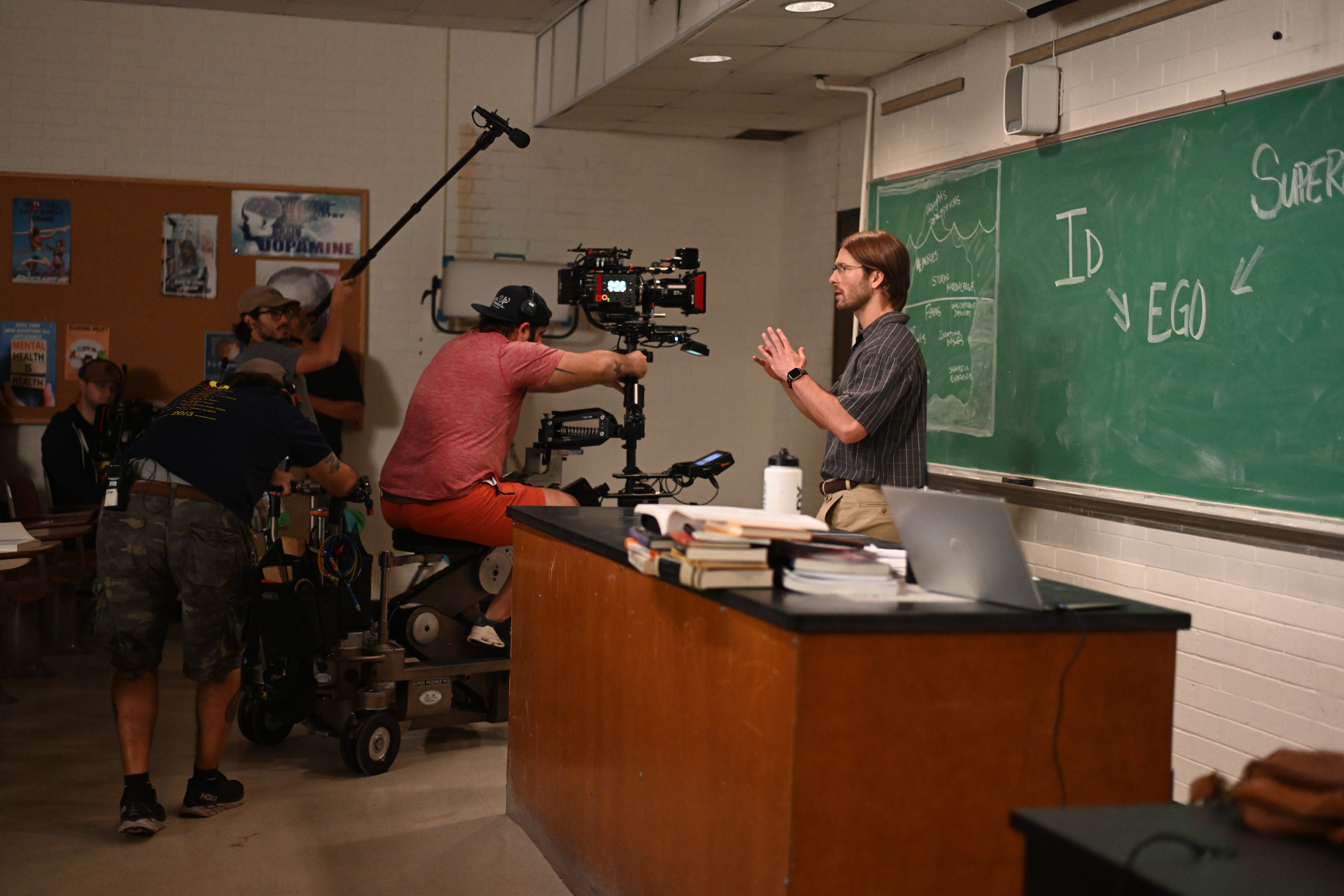
The Essence of Chinatown
Hit Man is a romantic comedy at heart, yet Linklater and cinematographer Kelly needed to showcase the noir elements that were peppered throughout the film. To find the look they were searching for, the conversation always came back to a 1974 American neo-noir mystery starring Jack Nicholson and Faye Dunaway.
“Our big reference was Chinatown, which is a beautiful sunlit noir,” Kelly said. “It’s bright, it’s LA, and that was our touchstone for shooting this movie.”
“It's a love story as well as being film noir. And a screwball comedy,” Kelly added.
Yet even with this foundation, there were many other elements to Hit Man that made it stand out as its own piece of cinema.
“It's fun to feel that you're rooted in a genre of some kind,” Linklater said. “I always approach it like a film noir. A little bit of a sexy thriller.”
“We're just sort of a mix of genres,” Linklater continued. “Not to mention, comedy, over everything.”
“This is a big cocktail of every genre,” Powell added. “It's sexy and it's funny and it's dark and it's twisted.”
Linklater is a director that wants to spend time with the actors and Kelly and his team had to find a way to be independent. But after almost 20 years of working together, there was a reliable workflow Linklater and Kelly could rely on.
“You learn to light a space and allow him the time to work with the actors because that's what he's known for,” Kelly said. “That's your job as a cinematographer to do your work in the allotted amount of time and let the script and the actor shine through.”

Finding The Right Composition
Looking through Linklater’s filmography, you’d be hard-pressed to find films with a budget of over 10 million dollars. Sure, a few exist, but the director has a knack for keeping the budget small enough for the film to be a success, no matter its distribution situation. However, this type of filmmaking also comes with limitations, and ultimately, the success of each film lies on the shoulders of Linklater and his creative team.
“You do things to the best of your ability with the budget and the time allotted,” Kelly said. “The fun part is figuring out how to do the best work you can with those constraints.”
To get Hit Man under that budget threshold, Linklater found himself in New Orleans, taking advantage of the tax credits and unique locations.
“We have all these tiny, tiny locations. It’s New Orleans,” Kelly explained. “For instance, Madison’s apartment is like nine feet or ten, maybe 12 feet across.”
“And the bedrooms are even smaller than that.”
While there were discussions to shoot the project on film, Hit Man was shot on the Sony VENICE 2 with a 6K sensor and the original Sony VENICE with the VENICE Extension System as the B Camera. These were paired with a set of Panavision Primo 70, which are designed specifically for large-format digital cameras.
“I think we had a great build,” Kelly said. “(The VENICE Extension System) was all on rails, and it was a regular camera when it needed to be. And then when it didn’t, you just slide it off the rails, and you have a tiny handheld camera.”
With this setup in hand, Kelly uncovered unique opportunities for composition that brought out the gritty noir elements Linklater was searching for. They shot in all sorts of cramped locations: cars, small bedrooms, handheld, and even used the VENICE Extension System as a POV security camera. It was a freedom that lent itself to the creativity of the film.
“I did that whole sex scene in Hit Man handheld, and it just becomes very freeing,” Kelly said.
It was all about being faster, more efficient, and more creative with very little in order to get all the shots they needed for any given scene. The choice to shoot on the VENICE boiled down to this freedom of movement and support for his creative choices.
With Hit Man now streaming on Netflix, Kelly has moved on to Linklater’s next project, Blue Moon. Set in New York but shot in Ireland, Blue Moon tells the story of Lorenz Hart during his last days and will star Ethan Hawke, Margaret Qualley, Andrew Scott, and Bobby Canavale.
Please note: Linklater and Powell quotes were pulled from interviews on the Tudum page by Netflix.

